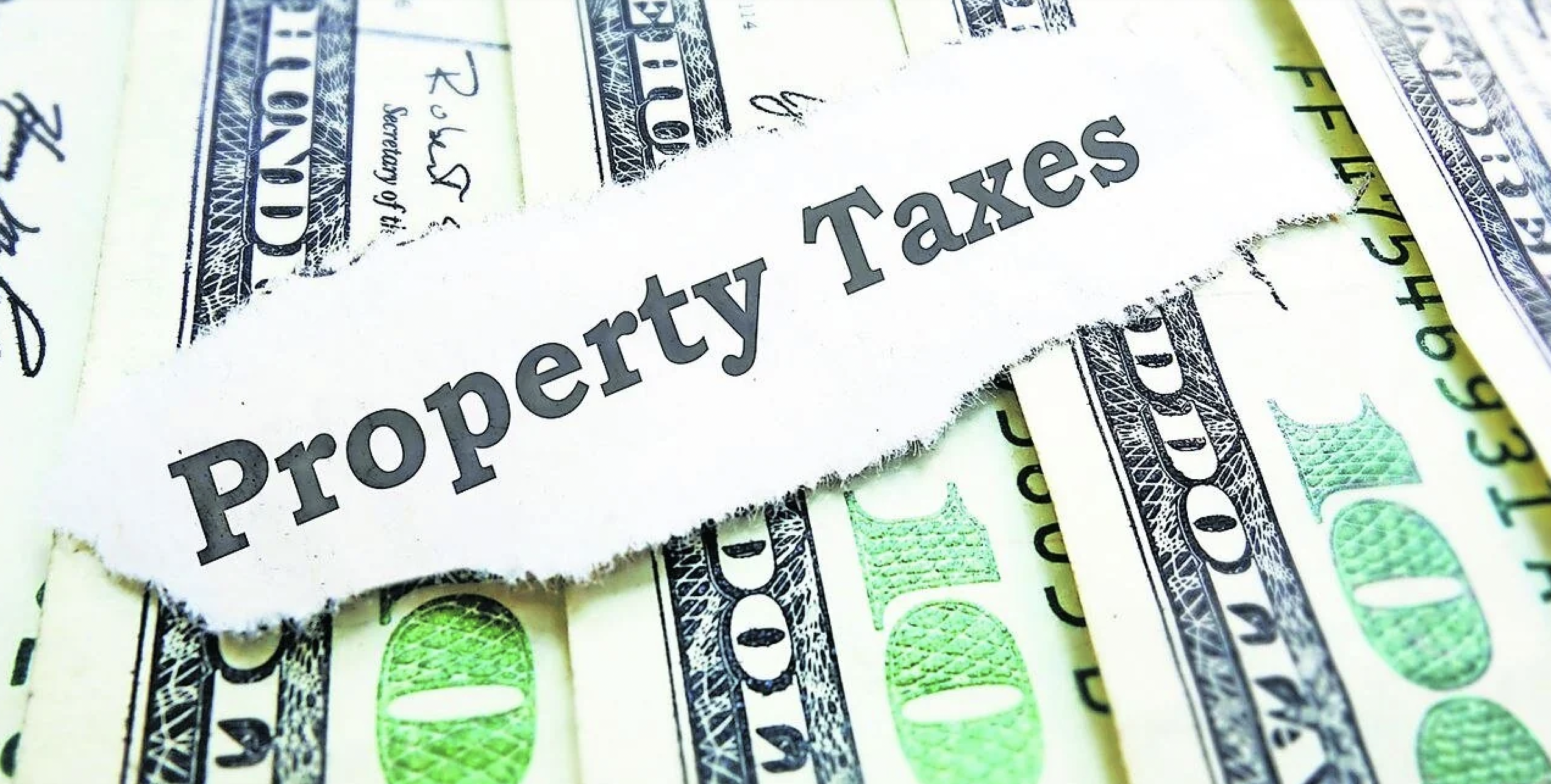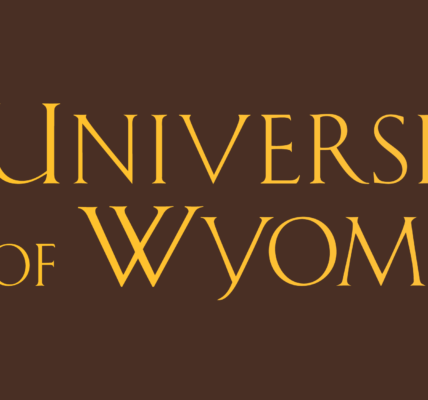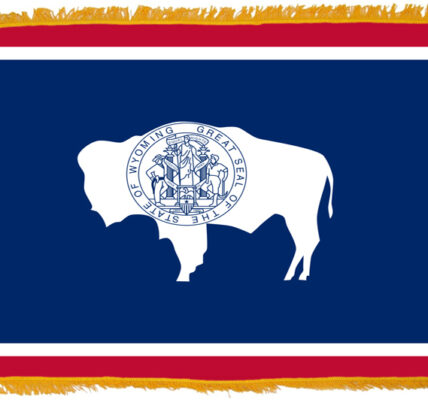
• To ease the soaring price of property taxes, a ballot initiative would create an exemption to effectively halve the bill for homeowners. But that could slash state services.
By Maggie Mullen, WyoFile.com
A statewide ballot initiative would effectively halve rising property tax bills for certain residents but would slash education and local government funding. That’s according to a fiscal analysis prepared in October by the Secretary of State’s office and the Department of Revenue.
The proposal, now being circulated for signatures, would exempt 50% of the assessed value for property used as a primary residence at least six months of the year. The property owner would also need to have been a state resident for at least one year to qualify for the exemption.
Former Republican candidate for governor Brent Bien is leading the charge on the initiative, which is being proposed amid a notable rise in property taxes around the state.
“We waited to see what the Legislature would do last session,” Bien told WyoFile. “Nothing happened there.”
Of more than a dozen bills aimed at providing residential property tax relief, lawmakers settled on three: one to expand an existing refund program for low- and middle-income homeowners and two to lay the groundwork for more ambitious future reform. That was insufficient, according to some voters, lawmakers and Bien.
“We’re not in competition with the Legislature,” Bien said. “But we want to get these guys going. We want to kind of light a fire under ‘em.”
Bien’s effort aside, lawmakers are feeling the pressure to find a solution. The Joint Revenue Committee dedicated much of the off-season, known as the interim, to discussing and drafting several bills related to property taxes. Along the way, some lawmakers have argued that the right approach won’t burden local governments since those entities have limited ability to generate their own revenue.
That would be a consequence of the initiative, which is estimated to result in a $132.4 million revenue loss in its first tax year alone if it’s successful. Larger fiscal hits are projected for tax years 2025 and 2026.
Rep. Liz Storer (D-Jackson) said that would leave the state with two choices.
“Are you going to cut services or are you going to make that [revenue loss] up somewhere else? It’s that simple,” Storer said.
(Storer is president and CEO of the George B. Storer Foundation, a financial supporter of WyoFile.)
Initiative process
The ballot initiative process makes it possible for voters to change state statute without legislative action.
To land on the 2024 ballot, the property tax initiative will need 29,730 signatures before lawmakers convene for the budget session in February. More specifically, 15% of voters from at least 16 counties will need to make up those signatures.
In September, Secretary of State Chuck Gray conditionally certified and announced the initiative after it secured its first 100 signatures, which in turn required Gray’s office to produce a fiscal analysis.
The report was prepared using residential property assessed values and property tax data for the 2023 tax year, along with the January 2023 report from the Consensus Revenue Estimating Group, which projects state government revenue. It also assumed that 71% of all residences would be owner occupied and that 83% of homeowners have resided in Wyoming for at least a year.
If voters pass the initiative, it would, according to the report, exempt:
$132.4 million in property taxes in 2024.
$137.1 million in 2025.
$141 million in 2026.
“People listen to that number and they’re like, ‘holy smokes, that’s a lot of money,’” Bien said before pointing to the state’s most recent supplemental budget, which socked away a record $1.4 billion into savings.
“Bottom line is: We’ve got plenty of money in this state,” he said.
Bien also questioned the need for residential property taxes to begin with “given how much revenue based on minerals — gas, oil, coal — that we actually get in the state.”
State financial forecasters, however, consider those revenue streams to be volatile in the long term. They have proved to be in the past, resulting in periods of booms and busts.
Local government funding
“There’s a disconnect between where these funds go. They are not state funds,” said Jerimiah Rieman, executive director of the Wyoming County Commissioners Association. “They go to fund local services that are provided on the ground.”
Meanwhile, local governments have little ability to generate their own revenues. Wyoming counties, in particular, have no independent taxing authority, while a general sales and use tax, or funding through a special district, must be approved by local voters.
How much a local government relies on residential property taxes varies across the state as do municipal and county expenses. Generally speaking though, Rieman said, employee salary and benefits make up a significant portion of most budgets.
The hospital was the largest expense in 2022 for five counties — Carbon, Converse, Laramie, Sheridan and Sweetwater — according to data from the Department of Audit. Roads and bridges were the most expensive services for Fremont, Johnson and Park counties while the sheriff’s department was the highest expense for Big Horn, Niobrara and Teton counties. In Natrona County, it was the airport. In Goshen County, it was the fire department.
In the case of a revenue cut — such as with the property tax initiative — it’s easy to say the state could pull funds from savings or other revenue streams to backfill the loss, Rieman said, but that’s not how the state’s tax system works.
“That just doesn’t happen,” he said.
In the past, lawmakers have relied on the “rainy day,” or Legislative Stabilization Reserve Account, to fund education in the face of a deficit. But unlike education, the state isn’t constitutionally obligated to protect services provided by local governments. And funding for those services is already an issue, Rieman said.
“I can’t sit here and say that county commissioners are saying that, ‘the roads are too smooth, that the ambulance gets there too quickly, that the fire truck is too close,’” Reiman said. “County commissioners are hearing from constituents that all of those need attention, and it is initiatives like this that are going to make it even harder to try and address those issues.”
Instead, Rieman’s organization supports targeted relief, such as the refund program. The Joint Revenue Committee voted in October to sponsor a bill expanding the program.
The committee will hold its final meeting ahead of the session on Monday in Cheyenne. Two bills related to an acquisition value-based property tax system are on the agenda.
WyoFile is an independent nonprofit news organization focused on Wyoming people, places and policy.
1 COMMENTS
Comments are closed.






Perhaps if the state put less in to the rainy day fund, we could enjoy a tax break. Seems illogical that real estate appraisers dictate how much we pay in taxes.